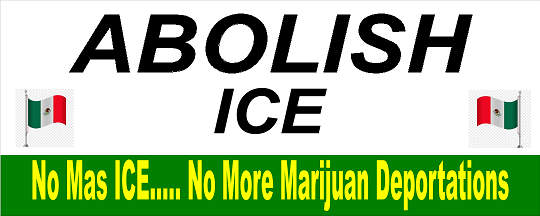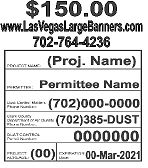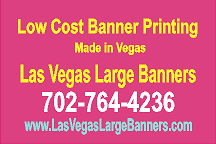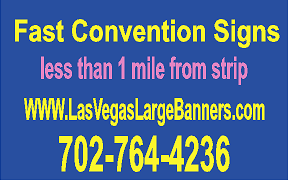Ice Immigration signs and banners are being used at riot locations in the United States. In recent years, protests against U.S. Immigration and Customs Enforcement (ICE) have intensified across major cities like Los Angeles, New York, Las Vegas, and Chicago. At the heart of these protests are powerful visuals—ICE protest signs and banners that amplify voices, express resistance, and draw public attention to immigration issues. These tools of protest have transformed from simple slogans on cardboard to professionally printed banners that command streets and social media feeds alike.
This article explores how signs and banners have become central to ICE immigration protests. It highlights city-specific styles, popular messages, and the impact of these visual elements in mobilizing support and shaping narratives. Through this lens, we’ll see how protesters are using visual communication to demand change and humanize the immigration experience.
ICE Immigration Signs and Banners in Los Angeles: Street Art Meets Activism
Los Angeles has long been a hub for immigrant communities, especially those from Latin America and Asia. Protesters here often infuse their ICE protest signs and banners with cultural references, bilingual messaging, and local artistry. But murals and hand-painted signs often blend traditional protest slogans with images of families being separated. Children in detention centers, and slogans like “Abolish ICE”, “Immigrants Are Welcome Here”, and “Sin Papeles, Sin Miedo” (No Papers, No Fear).
In recent demonstrations, particularly near the Metropolitan Detention Center and City Hall, protesters used high-quality vinyl banners, large enough to cover building walls, emblazoned with phrases like “Free Them All” and “ICE Out of LA.” So these banners are not only visible from far distances but also reusable across multiple protests. Custom protest banners in Los Angeles frequently use bold colors—reds, blacks, and yellows—to evoke urgency and stand out amid city traffic and urban backgrounds.
Sign-making workshops hosted by advocacy groups such as CHIRLA (Coalition for Humane Immigrant Rights) and ICE Out of LA have become common. These workshops emphasize creating protest signs that are visually compelling and emotionally powerful. Protest banner design in Los Angeles has become an art form, merging political urgency with creative resistance.
New York City: Urban Resistance and the Art of Protest Messaging
In New York City, the fight against ICE is fierce, and protest signage is as diverse as the city’s population. Protesters frequently gather in locations like Foley Square, Times Square, and outside ICE headquarters in Manhattan, carrying placards and banners with cutting critiques of federal immigration policy.
New Yorkers favor print-ready protest signs that are easily replicated and distributed. During major rallies, you’ll often see coordinated signs using consistent fonts and color schemes, reading: “No Ban, No Wall, No Raids”, “End Deportations Now”, and “Defund ICE.” These signs are often part of broader social justice campaigns, linking immigration reform to racial justice, police reform, and LGBTQ+ rights.
The city’s rich print culture fuels the mass production of protest materials. Unions, artist collectives, and student organizations contribute thousands of printed ICE protest signs before major marches. These groups ensure the availability of large protest banners that can span entire streets during parades and protests. Banner messages like “Sanctuary for All” and “ICE = Terror” confront viewers with the emotional and moral stakes of immigration enforcement.
In a city that never sleeps, protest signs in New York stay relevant by adapting rapidly to political developments. Within hours of policy announcements or raids, new signs appear across boroughs, pasted on poles, storefronts, and overpasses, turning the entire city into a protest canvas.
Las Vegas: Rising Voices in a Rapidly Growing City
While Las Vegas may be better known for its entertainment, it has emerged as a hotbed for immigrant advocacy and ICE protest signage. With a fast-growing immigrant population and a politically active youth base, Las Vegas protests often take place in visible locations like The Strip, Downtown Las Vegas, and the Federal Building.
Signs here are direct, bold, and unafraid to confront the cruelty of deportations. Popular messages include “ICE Breaks Families”, “Keep Families Together”, and “Deport Hate, Not People.” Many protesters carry custom-made protest banners on poles that allow them to wave messages above crowds and into traffic.
Local organizations like Make the Road Nevada and Arriba Las Vegas Worker Center provide communities with resources for creating protest signs. They focus on combining emotional messaging with clear calls to action, such as “Call Congress: Shut Down ICE” and “Justice for Dreamers.”
Unlike cities with longstanding protest cultures, Las Vegas uses digital tools to create signs, with mobile apps and downloadable templates gaining popularity. So protesters download print-ready ICE protest signs the night before events, ensuring consistency and rapid deployment. This efficiency shows how technology is shaping modern protest materials.
Chicago: Grassroots Messaging with a Punch
Chicago, a deeply unionized and activist-driven city, showcases a long tradition of protest culture. ICE protest signs in Chicago are grounded in grassroots organizing and powerful community coalitions. Demonstrations often take place in Pilsen, Little Village, and near ICE’s Broadview Detention Center. Protest signs reflect the rich cultural and political history of these neighborhoods.
Chicagoans favor handmade protest signs, often painted on cardboard, cloth, or reclaimed wood. Popular slogans include “Stop the Raids”, “No Human is Illegal”, and “Freedom for All Detainees.” But many signs are bilingual, written in English and Spanish, echoing the city’s vibrant Latino community.
One of the standout features of Chicago protest banners is their ability to tell a story. Organizers collaborate with artists to produce large murals on fabric that depict immigrant journeys, family reunifications, and community resilience. These banners are paraded through the streets during rallies and hung on buildings during sit-ins and occupations.
Groups like Organized Communities Against Deportations (OCAD) and The Resurrection Project lead banner-making events that double as community gatherings. These events strengthen solidarity and foster creativity, ensuring that the protest signs and banners emerging from Chicago carry authenticity and cultural relevance.
The Impact of Protest Signs and Banners on Policy and Awareness
Across all four cities, ICE immigration protest signs and banners have proven to be more than just visual noise—they are instruments of change. These signs capture media attention, go viral on social media, and influence public perception. Their messages often make their way into headlines, interviews, and speeches by political leaders.
When activists unfurl banners during public events or block traffic with massive signs, they disrupt business as usual. So these acts compel local officials to respond and give voice to community concerns. In many cases, custom banners and signs have helped force ICE facilities to reduce cooperation with local law enforcement, or have spurred sanctuary city policies.
Moreover, the signs themselves often outlive the protests. But captured in photographs and news footage, they become part of the public record and collective memory. So art museums and digital archives have started collecting ICE protest signs to preserve this visual history for future generations.
With consistent use of impactful signage, protesters amplify their reach. High-visibility protest banners, professional vinyl signs, and even simple cardboard slogans have united disparate communities around a common goal. Humanizing immigrants and ending unjust enforcement policies.
Designing Effective ICE Protest Signs: Tips and Trends
If you’re planning to attend or organize a protest, designing effective signs and banners is crucial. Keep messages short and readable from a distance. Use bold fonts and high-contrast colors. Choose words that evoke emotion and urgency—“Protect Immigrants,” “No More Camps,” “Abolish ICE Now.” Avoid cluttering your sign with too much text or overly complex graphics.
Use sturdy materials like foam board or vinyl for long-lasting protest signs. But for marches, pole-mounted banners help your message stay visible in crowds. If you’re organizing a group, consider creating coordinated signs using the same template to maximize impact and media attention.
Digital tools can help too. Use online platforms like Canva or Adobe Express to create print-ready protest signs that look professional and communicate clearly. For those who prefer handmade approaches, stencils and spray paint allow for quick and repeatable designs. QR codes linking to donation pages or petitions are also becoming common additions to banners.
And don’t forget the legal and logistical side—check local ordinances about protest materials and ensure signs aren’t mistaken for weapons. Most importantly, make sure your signs represent the values and stories of the communities they aim to uplift.
Final Thoughts
In cities like Los Angeles, New York, Las Vegas, and Chicago, ICE protest signs and banners serve as a rallying cry for justice. They communicate anger, hope, solidarity, and resistance in ways that speeches alone cannot. Whether made by hand or printed en masse, these visual tools are essential in shaping public conversations around immigration.
By investing time and creativity into making protest signs that speak volumes, communities continue to challenge injustice and demand change. So the streets speak through banners—and in today’s protest movements, those banners carry the weight of millions.
Remember to be non violent and to demonstrate peacefully.







